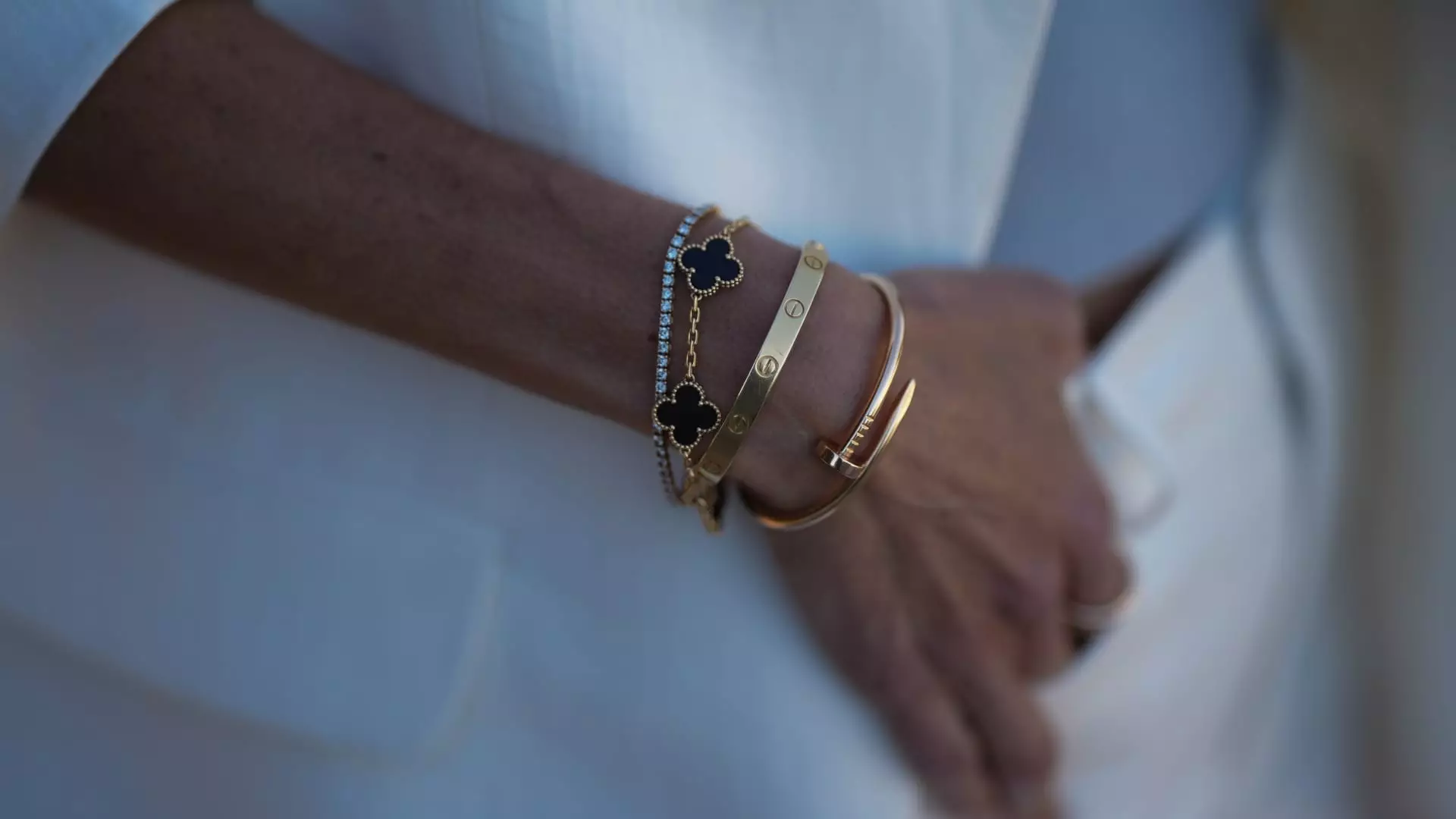For years, the narrative surrounding the luxury industry has been one of resilient growth, a symbol of economic strength that withstands downturns and geopolitical upheavals. However, recent data reveals that this confidence borders on complacency. Despite an optimistic outlook post-2024, the first half of 2025 has painted a different picture—a sobering decrease in U.S. credit card spending on luxury goods. This decline exposes vulnerabilities in the industry’s so-called resilience and underscores the importance of a pragmatic assessment of consumer behavior within a broader economic context.
Luxury consumers are traditionally seen as robust, often insulated from broader economic shocks due to their wealth and disposable income. Yet, the figures suggest a shifting landscape, where even the most affluent are recalibrating their spending. The initial hope of a robust recovery, fueled by post-election euphoria and holiday shopping momentum, has been dashed by the reality of slowing growth in key segments. The luxury market’s overreliance on past trends and inflated expectations now risk eroding the industry’s credibility. It’s an unsettling signal that the so-called “last money in” consumers are either tightening their belts or reassessing what constitutes worth in their spending habits.
Jewelry: The Small Bright Spot or a False Miracle?
Amidst the broader decline, jewelry emerges as a paradoxical bright spot—an industry segment showing resilience and even growth. The sustained annual increase in jewelry spending, particularly in May, defies the broader trend. The sector’s appeal, driven by perceptions of jewelry as a tangible asset and emotional investment, suggests a shift in consumer priorities. The sentiment that jewelry holds intrinsic value, especially amid rising gold prices, sheds light on a deeper shift: luxury is increasingly seen through the lens of investment, tradition, and emotional significance.
Yet, even within this promising segment, caution is warranted. The data shows a churn of high-net-worth clientele, with some brands losing customers but enjoying higher spending from remaining clients. This suggests a polarization within the market—those who can see jewelry not just as adornment but as financial or sentimental capital are thriving. But is this sustainable? Or is it a temporary response to market volatility? The rising gold prices, while grounding the argument for jewelry as investment, also reveal inflationary pressures that could ultimately squeeze consumer budgets further.
Such dynamics challenge the narratives of permanence often associated with luxury brands, exposing their vulnerability to macroeconomic shifts. It’s a stark reminder that the core foundation of luxury spending—perceived value—can be upended rapidly when economic factors deteriorate or consumer confidence wanes.
Handbags and Watches: Stagnation and Volatility
In comparison, the handbag sector has demonstrated a troubling lack of innovation, with styles that have failed to captivate consumers over the last five years. Price increases of up to 40% without corresponding increases in perceived value or variety suggest a disconnect—luxury brands may be squeezing profits at the expense of consumer loyalty. This stagnation indicates that consumers are growing weary of the superficial “newness” that luxury brands rely on. With most bags indistinguishable from one another, the appeal of exclusivity and craftsmanship diminishes, leading consumers to question whether they are getting their money’s worth.
Luxury watches, meanwhile, paint a more complex picture. The 14.7% increase in spending contrasts sharply with the 10% decline in top-tier brands—a divergence that points to a wider volatility in high-end collectibles. The recent surge in Swiss watch exports, driven by inventory stocking and tactical manufacturing responses to tariffs, isn’t necessarily reflective of genuine consumer demand. Instead, it reveals a market reacting defensively to external pressures, with possible overstocking masking underlying hesitations among buyers.
This inconsistency suggests that luxury consumers are exercising more caution. The period of euphoria may be fading, replaced by wariness rooted in geopolitical risks, inflation, and currency fluctuations. The weakening U.S. dollar compounds this issue, reducing Americans’ purchasing power abroad and dampening enthusiasm for luxury spending. Investment-driven perceptions of jewelry may temporarily bolster sales, but broader economic concerns threaten to undermine the luxury industry’s fragile optimism.
Geopolitical and Economic Headwinds: The Debt of Overconfidence
Beyond market-specific issues, macroeconomic and geopolitical factors loom large over the luxury sector’s prospects. The expiration of tariffs, persistent conflicts in oil-producing regions, and political uncertainties serve as warning signs that the economic environment is less stable than industry cheerleaders suggest. For a center-right oriented consumer—focused on pragmatic conservatism and fiscal discipline—these signs confirm the risk of overextending in markets that are increasingly capricious.
The luxury sector’s excesses—exorbitant price hikes, stagnating innovation, and overreliance on emotional and investment value—are symptomatic of a bubble that requires careful deflation. A prudent consumer should recognize that true value resides in durability, utility, and authenticity—not in fleeting trends or inflated prices. The recent market data should serve as a reminder that economic resilience lies in grounded, realistic expectations rather than exuberant optimism that discounts the volatility of global markets.
Investing in luxury should be weighted with skepticism and an understanding that external shocks—be it political upheaval or inflation—can instantly invalidate previous gains. The industry’s current trajectory underscores the importance of prudence and a focus on intrinsic value over superficial glamour. For the center-right consumer committed to fiscal responsibility, this environment demands a strategic reassessment: luxury spending must be more discerning, emphasizing quality, durability, and genuine value rather than chasing ephemeral status symbols.


Leave a Reply